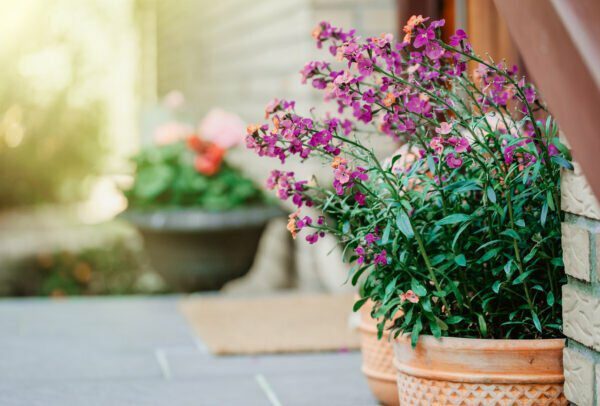Tips for Bringing Outdoor Plants Inside for Winter
Just because the outdoor gardening season is ending doesn’t mean you can’t still enjoy your outdoor plants! Although most of them won’t survive the harsh winter, some of them can be brought indoors as houseplants to help them make it through the colder months. Now that nighttime temperatures have dropped, it’s time to think about bringing some of your more delicate plants inside. With some extra care, you can help them survive to enjoy another season outdoors come spring. You’ll want to make the move indoors before frost becomes a serious threat, so gather up your tools and supplies and get started with these tips!
What Plants to Bring Inside
Before making any choices, you’ll want to consider how much indoor space you have, paying special attention to the level of light, humidity and warmth your plants require. Many tender bulbs, annuals, and herbs will only survive if they’re brought inside. Some plants can be expensive to replace, so be sure to bring in your favorites–but only those that are healthy, without any signs of disease.
Some of your plants will actually benefit from a period of dormancy.
For tender bulbs in the ground (such as dahlias and gladiolus), dig them up and cut the foliage back. Gently brush off as much soil from the bulb as possible and place them in a warm, dry area for one to two weeks to dry. Then pack them loosely in a cardboard box, separated by shredded newspaper. Store them in a cold, dark place until spring.
Many annuals and herbs (such as begonias, geraniums, and fuschia) will keep growing throughout winter.
They may not thrive as if they were outdoors, so don’t be too concerned with any leaf drop or lack of blooms–they’ll recover in spring. Cut back any leggy branches and trim dead leaves and spent blooms. Re-pot anything dug up from the garden. Plants don’t need a lot of fertilizer during the winter due to lower levels of light. Plant Food Hero (3-2-2) is a gentle, organic, liquid fertilizer you can safely apply without the risk of fertilizer burn. NOTE: Do NOT apply any kind of fertilizer foliarly on plants that are dormant!
Protect Against Pests
You’ll want to avoid bringing any unwanted guests indoors! Check the leaves for any insects, slugs, or eggs and don’t forget to look under the lip and at the bottom of the container, where bugs like to hide. For added protection, mix 1/4 cup of YARD GUARD with water in a 1 quart spray bottle. Mist the tops and underneath leaves as well as the containers to protect against mold and insects.
Creating the Best Indoor Environment
Most plants require full sun when outside during the growth season. To ensure your plants get adequate light, place them near south-facing windows or consider using grow lights with full-spectrum bulbs – these replicate the natural solar spectrum.
Heating our homes in the winter causes drier air, so consider using a humidifier near your plants. If that’s not practical, line some trays with a waterproof material and add a layer of gravel. Add enough water to moisten the gravel and place your potted plants on top. Continue to water throughout the winter to keep the gravel moist. This will help to increase the relative humidity surrounding your plants.
Don’t over-water! This is the most common cause of death for indoor plants, which really don’t need much water in wintertime. Let the top ½ inch of soil get dry to the touch before watering again. If in doubt, don’t water. In spring, when your plants send up new growth, you can resume watering them.
Up next: Winter Care for Houseplants!
